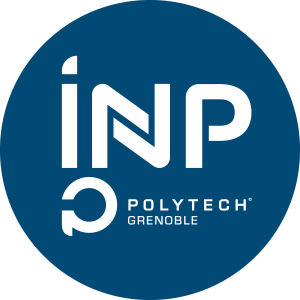Number of hours
- Lectures 18.0
- Projects -
- Tutorials -
- Internship -
- Laboratory works -
- Written tests -
ECTS
ECTS 0.2
Goal(s)
Understand the functional materials of tomorrow, the major families, their development, their properties, the mechanisms involved and their potential applications as well as become aware of technological watch
Content(s)
A) Materials in the energy sector: from the laboratory to the business plan
1. Materials for energy: from the laboratory to the business plan
- Introduction to the 2 case studies, expectations for deliverables (oral presentation, format, criteria)
- Testimony and advice from a materials engineer in the energy sector: career path, communication advice
2. The energy sector and its sectors: status and developments
- The main sectors in France and around the world
- Main trends in the energy sector
3. Prepare a business plan and defend your project in writing
- Structuring a business plan / pitch deck and underlying methodologies
- The "Business Model Canvas"
4. Oral presentation of the case studies by the different groups
- Presentation by each group: "My project in 180 seconds"
- Questions and Answers
Course given by François Le Scornet (Carbonexit Consulting)
B) Magnetic materials :
1/ to introduce a French metallurgical industry, one of the world leaders in its field (alloys): its history, its location, its industrial tools, its technical and economic problems including the re- and co-processing of waste, its major product families with main properties and applications). In this part the presentation is only a guide and I add a lot of things orally.
2/ industrial R&D business
3/ quick reminders of magnetism to make the link between the previous teachings and the next part
4/ Emerging materials and very varied applications: this part of a potential of at least 8 hours is reduced according to the years to 1-1h30 at the end of the intervention. I try to convey and show the strong understanding relationship necessary to understand the relationship between the material and its application.
4-1/ FeCuNbSiB nanocrystalline materials and application of differential circuit breakers and power electronics components
4-2/ Phytherm alloys for temperature regulation/ induction cooking
4-3/ FeNi alloys - magnetization dynamics/ applied in watch motor
4-4/ polarized or non-polarized relay alloys/ magnetization dynamics on linear actuator for safety (gas, electricity)
4-5/ magnetization dynamics in high saturation alloys for linear actuators such as fuel injectors
4-6/ hypertextured substrate of high superconductor substrate Tc for "supergrid" transported energy
4-7/ FeSiLa-X magnetocatalytic materials for "magnetic cooling"
Course given by Thierry Waeckerle (Imphy)
C) thermoelectrics
This course, entitled "thermoelectric materials", is primarily intended to discuss the main thermoelectric effects. In order to allow students to visualize these effects, basic demonstrations take place in class. The next step is to link these thermoelectric effects to the thermoelectric properties of materials through the introduction of the ZT merit figure. The characteristics of the main thermoelectric materials are then discussed in a small group work in which students must find out which applications best match which materials. After a short presentation, the main existing thermoelectric devices and associated markets are described.
Course outline :
1. introduction
2 Main concepts
1. the three thermoelectric effects
2. thermodynamic efficiency: the figure of merit
3. application to "real" TE materials
1. what is a good TE material
2. how to improve the TE properties of materials
4. Thermoelectric devices: some basics
5. It's up to you: Which applications for which types of materials?
6. Summary of the main applications of thermoelectricity
3.1 Composition, development
3.2 Properties and mechanisms
3.3 Application to energy conversion
Course given by Dimitry Tainoff (UGA)
D) Energy recovery
Course given by Alain Sylvestre
PrerequisitesMetallurgy, ceramics, polymers, solid state physics and chemistry
CC
The course exists in the following branches:
- Curriculum - MAT - Semester 9
Course ID : KAMA9M19
Course language(s): 
You can find this course among all other courses.



